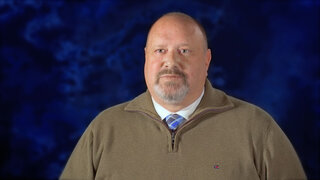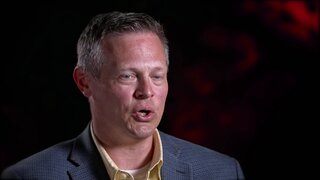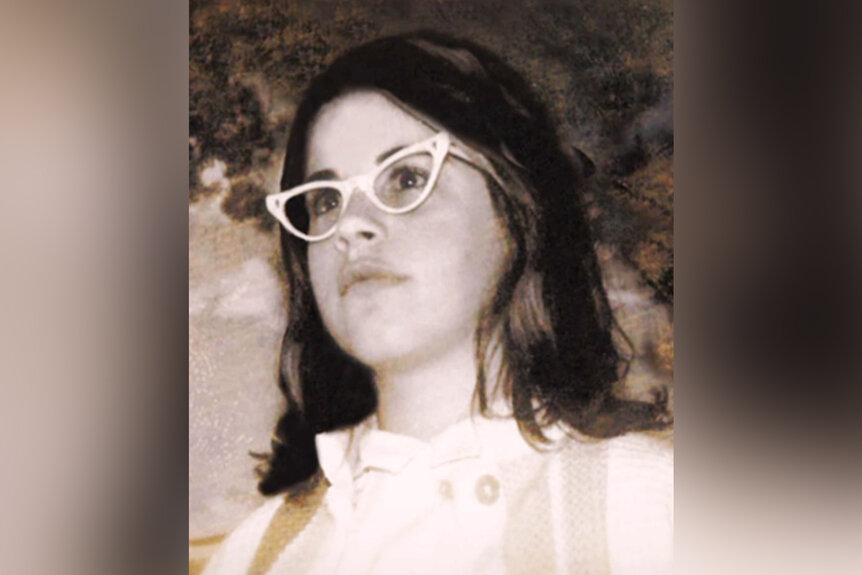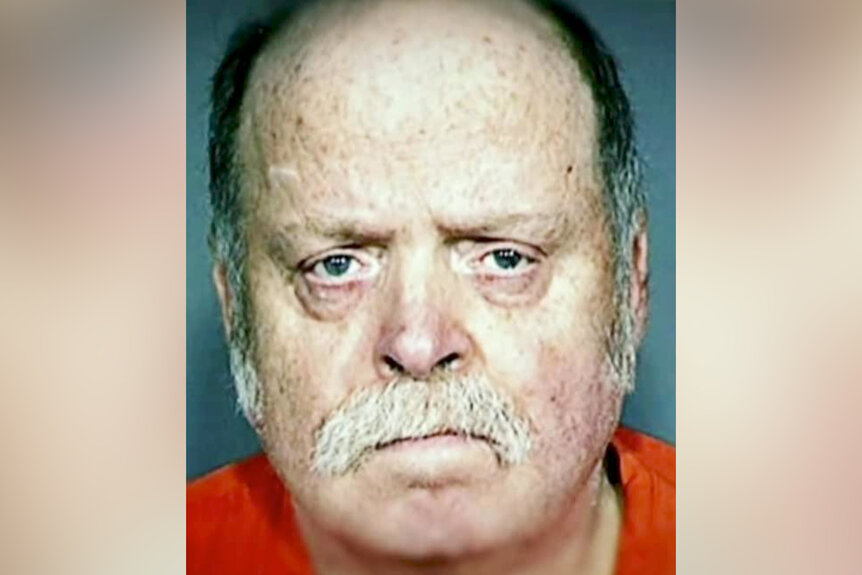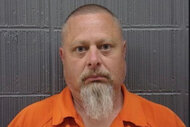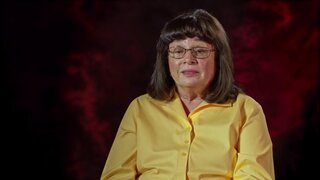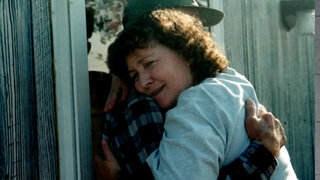Create a free profile to get unlimited access to exclusive videos, breaking news, sweepstakes, and more!
Did Religion, A Serial Killer, Or Romance Lead To A Utah College Student's Death?
It would take more than three decades for investigators to learn who shot Barbara Rocky, a 1974 Brigham Young University student, to death in Big Cottonwood Canyon.
Eclectic, free-spirit Barbara Rocky often clashed with her more conservative roommates at Brigham Young University.
So, when Rocky was found by a utility worker shot to death in Big Cottonwood Canyon on March 11, 1974, investigators had to consider whether the 21-year-old college student’s ongoing tension with the people she lived with had led to her violent death.
“The roommates had only known her since January when Barbara moved into the house, and going to a predominantly Mormon school, Barbara didn’t really fit that mold,” Todd Park, a detective Salt Lake County Sheriff’s Office, told Oxygen series “An Unexpected Killer." “She was from California and she was more of a free spirit.”
Detectives were quickly able to rule out the theory when they could find nothing to tie her roommates to the crime, but it would take decades for them to figure out who really killed the brilliant college student.
Rocky — who was described by her sisters as “sweet,” “creative,” and “very theatrical” — had been attracted to the quiet Provo-based university because she was exploring religions and was intrigued by the Mormon faith.
“My parents were very happy for her to go to Brigham Young because they felt that she would get the safe group of friends and the good education, and religion that she required,” her sister Marilyn Garisto recalled to "An Unexpected Killer."
But the devout, conservative community may not have been the ideal match for Rocky, who continued to dig into religions at the school. She moved in with seven other roommates, but some of the roommates told police that she had started to explore witchcraft.
“The roommates were very religious. They had attended church faithfully. I think Barbara would probably experiment with different religions just to expand her knowledge,” Park said. “At times she would do things that would maybe scare them.”
Rocky had also been known to carry a .357 revolver pistol.
When she was found shot to death in Big Cottonwood Canyon, investigators began to wonder whether she carried the weapon because she had been afraid of someone before her death. Rocky was found on the chilly day with her clothes neatly folded in a pile above her head. She had a gunshot wound through her arm and four to five others in her back in what Park described as “execution-type shots.”
“Her arms were tucked up underneath her. That told us that she was in pain, that she was fearful of what was happening to her,” he said. “With the way that her body was positioned, we felt that sexual assault was part of this crime scene.”
Investigators found .38 caliber bullets at the scene that had gone through her body and also logged some soil from the crime scene, but in the 1970s detectives didn’t have the DNA advances of today.
Shortly before the body was discovered, Rocky’s friend Gerry Hickers had reported her missing to BYU police. He told authorities that he had last seen Rocky on March 11 around 10 a.m. when he returned her car keys after borrowing her car. He said the pair had planned to go grocery shopping later that day but she never showed up.
Hickers said he walked by her house on the way to his own home and was surprised to spot her car in an apartment complex parking lot, where she had no reason to be. Concerned, he told police he approached the car and found a note Rocky had written to her roommates saying she was leaving.
“Inside the car, he finds this note that was left by Barbara addressed to all the roommates that basically said that she had found her people, that she was leaving to go be with her people,” Park said. “I think that he looked at it like a suicide note and so he took the note over to the roommates and that raised enough suspicion to report her as missing.”
A handwriting expert would later confirm the note had been written by Rocky.
Hickers was able to provide a detailed account of his whereabouts that day and seemed genuinely distraught about Rocky’s death.
“Gerry reported her missing, he found the note, he was cooperating with detectives, so he wasn’t really somebody that fit as a suspect,” said Detective Sgt. Kris Ownby of the Salt Lake County Sheriff’s Office.
Aside from looking into Rocky’s roommates, investigators also learned that before her death Barbara had been infatuated with a man named Richard. She had described the self-proclaimed psychic to others as her boyfriend, but Richard disputed that characterization, telling investigators they had more of a “spiritual relationship” than romantic link.
Whatever the relationship was, those who knew Rocky described it as being volatile. Rocky once told her roommates Richard had pulled a dagger on her and threatened to stab her and her therapist told police that Rocky had described Richard as a warlock who was into devil worship.
Authorities were also suspicious when they learned Richard had been staying at a home not far from the canyon where Rocky was eventually found and owned the same type of weapon used to kill the college student. However, the weapon wasn’t a match to evidence found at the crime scene.
Investigators even considered the possibility that Rocky could have been a victim of notorious serial killer Ted Bundy — who had been hunting age college-age women in Utah around that same time — but eventually authorities were able to rule him out after determining that he had been in Washington on the day of her death committing another murder.
Without definitive evidence to link anyone to the crime, the case went cold for decades until Rocky’s family reached out to investigators one last time in 2005 to request authorities take a new look at the case.
Park, a new homicide detective at the time, sent evidence from the crime scene for DNA testing while authorities took a new look at the decades-old suspect list. Authorities believed the most likely suspect had been Richard, whose alibi for the time of the murder had never been solid, but they were shocked when the investigation and DNA evidence pointed to another man: Gerry Hicker.
“He was not who we suspected initially and so to learn that he was the one responsible for killing her was very surprising,” Ownby said.
Hicker, the same man who had reported Rocky missing, had been accused of rape in the years after her murder and had a known obsession with guns. DNA taken from the soil underneath Rocky’s body also matched to Hicker.
“Finding that DNA in the soil was like finding in needle in a haystack,” said Deputy District Attorney Vince Meister.
When laying out a possible motive in the case, prosecutors surmised that Hicker — described by others as someone who struggled to make friends — knew that Rocky planned to leave BYU and killed her after she rejected his sexual advances.
He was charged with Rocky’s murder on Nov. 6, 2007.
By the time of his arrest, Hicker had been diagnosed with cancer and was in failing health. As a result, prosecutors agreed to a deal that allowed Hicker to plead guilty to manslaughter and be sentenced to five years behind bars.
“I know it had a very devastating impact,” Hicker later said in an apology to her family, according to Deseret News. “I’m very, very sorry for what happened. I wish I could change it but there’s no way it can be changed. I realize how devastated their lives have been, and unfortunately there’s nothing I can do to reverse it other than, I guess, live with it [and] try to better myself.”
He served three years in prison and died in 2014.
“I felt that his ill-health was Barbara’s justice,” Garisto said.
